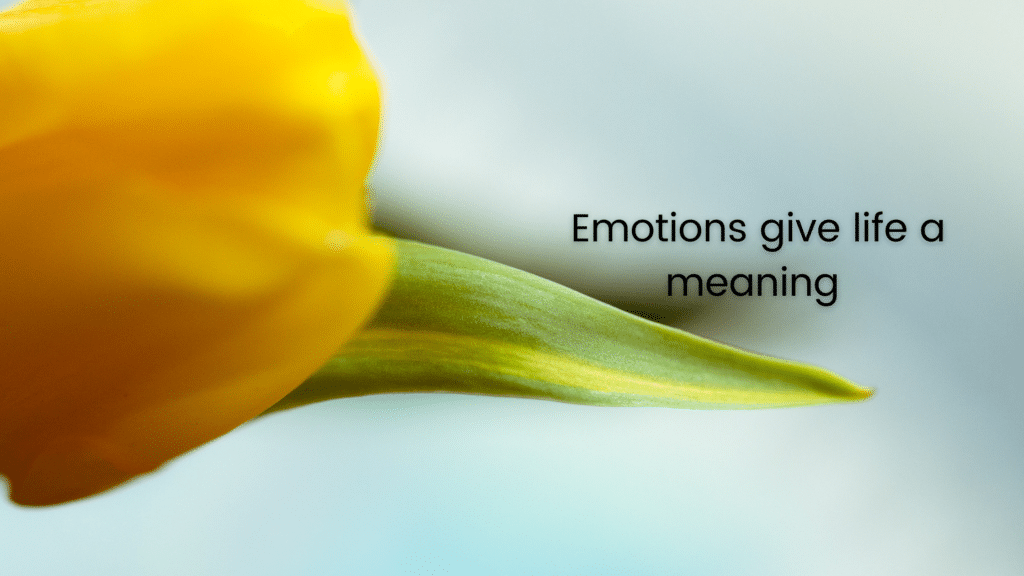Article by Colette Nichol, Solo Filmmaker and Story Strategist
Estimated reading time: 5 minutes
Today we’re going to talk about emotion in film. This topic is critical. If you want to make captivating films and videos, you need to think about this ONE important thing. So buckle up!

Emotion is Everything
I’ve been trying to get Jimmy excited about yurts for years.
It hasn’t been an aggressive campaign. It’s been a more casual on-again-off-again campaign. But no matter what I said, he expressed zero interest.
I have this fantasy of buying a piece of land two hours from Vancouver and setting up a yurt. An oasis away from the city. An analog retreat.
Last weekend everything changed.
Jimmy decided to take me on a “surprise” trip. He told me not to make any plans for the weekend. On Saturday morning, I could see him trying to covertly figure out where to take me camping.
I’m picky. He’s relaxed. So invariably, any surprise ends up not being a surprise at all as Jimmy wisely decides to get my opinion on his plans.
In the end, since I was sick and didn’t want to camp, he handed the decision of where to stay over to me.
After searching on AirBnB for half an hour, I found a place three hours from Vancouver. A yurt in the middle of an ancient moss-covered forest.
Eureka!

It’s 7 p.m. and freezing cold in the yurt.
The only heating is in the form of a pathetic little fan that basically just blows heat up into the centre of the yurt. The ceiling is probably a balmy and delicious temperature. Everything else is icy cold.
As I’m futzing about getting my coffee situation set up for the next day, Jimmy is sitting in the bed, blankets curled up to his chin. It’s the only warm place in this giant tent.
I glance over and see the strangest expression on his face.
It’s a look of childlike wonder. His eyes are bright and shiny. He looks like he’s been given an incredible gift. He’s staring up at the ceiling of the yurt, smiling.
“What are you looking at?” I ask.
“This. It’s like sleeping in a giant tent,” he says, amazed.
“Yes, well, that’s because it IS a giant tent,” I respond dryly.
Emotion is everything.
Without emotion, we don’t have meaning. We have a literal sense of something, but it doesn’t matter. Emotion is what makes everything relevant.
There’s an emotion in a place where before there was nothing.

When I used to talk to Jimmy about yurts, it was meaningless to him. He had no emotional connection to what I was talking about, so he couldn’t engage with the topic.
How does this relate to making short and micro films and videos?
Without emotion, your microfilm will be hollow. It won’t move people.
It might be intellectually engaging and highly watchable, and technically proficient. But – and this is a big but – it won’t have an effect on the viewer.
Emotion in Film
Capturing the emotion of your subject is what elevates your videos and makes them meaningful to your viewer.
In the three-hour Netflix docu-series Inside Bill’s Brain, two moments stand out for me. One is where Bill talks about losing his best friend. The sadness is palpable. Bill Gates instantly becomes human. (Even though, FYI, not a fan of the guy!)
The other was an engineer talking about nuclear energy. His face is lit up like a light bulb as he tells us about what he’s working on. The excitement of discovery is written across his face.
In fact, this entire documentary is full of emotion.
Whereas before I had no feelings whatsoever about Bill Gates, or nuclear energy, or the need for proper sewage treatment in the developing world, now I have an emotional connection to all of those subjects.
That emotional connection that now lives in me didn’t come just from the director’s excellent storytelling ability. It came from the palpable emotion of his subjects.
Anyone who has ever worked in sales knows that sales are a “transfer of excitement.”
If someone is going to buy something, they need to get excited about it. Good salespeople know how to take their excitement and transfer it to the customer.
Well, filmmaking is a transfer of emotionality. Without that transfer, we have moving images and story structure but no MEANING.
Emotion gives life meaning.
So what do you need to do in your next filmmaking project? Look for the spark in your subject, look for what lights them up. Look for the emotional moments. Think about emotion in advance. Predict what emotions you’ll be able to find.

If you’re in the middle of a shoot, and you’re feeling lost, chant this mantra: emotion is everything.
Learn Filmmaking and Get the Gear Guide
If you’re interested in learning filmmaking, check out the Solo Filmmaking Mentorship Program I created for aspiring filmmakers and video creators. It usually goes live once per year. So I recommend getting the Story Envelope Filmmaking letter which comes out a couple of times per month. That way, you can get filmmaking tips for free and find out when the filmmaking course is going live again.
Also, before you go, grab the Solo Filmmaking Gear Guide and Checklist for Beginners.

About the Author
Hi! I’m Colette Nichol. I’m a solo filmmaker and story strategist based out of rainy Vancouver, Canada. I’ve been making videos and micro films for small businesses and global brands since 2014.
Plus, I LOVE to help aspiring filmmakers pursue their dreams and start making films. This blog is designed to help you gain the knowledge you need to become a filmmaker.
If you want more, get on the waitlist for the Story Envelope Academy Solo Filmmaking Mentorship Program. It opens up one time per year and is the best way to become a filmmaking or video pro fast!
CLICK HERE to get on the solo filmmaking mentorship waitlist.